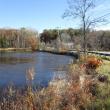KELT will facilitate study for returning Woolwich meadow to salt marsh
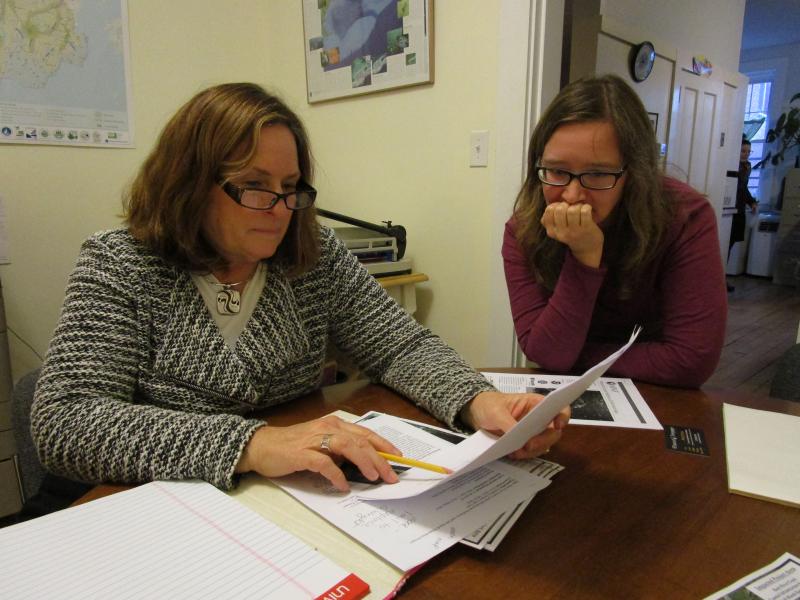 KELT Executive Director Carrie Kinne, left, and KELT project coordinator Ruth Indrick. PHIL DI VECE/Wiscasset Newspaper
KELT Executive Director Carrie Kinne, left, and KELT project coordinator Ruth Indrick. PHIL DI VECE/Wiscasset Newspaper
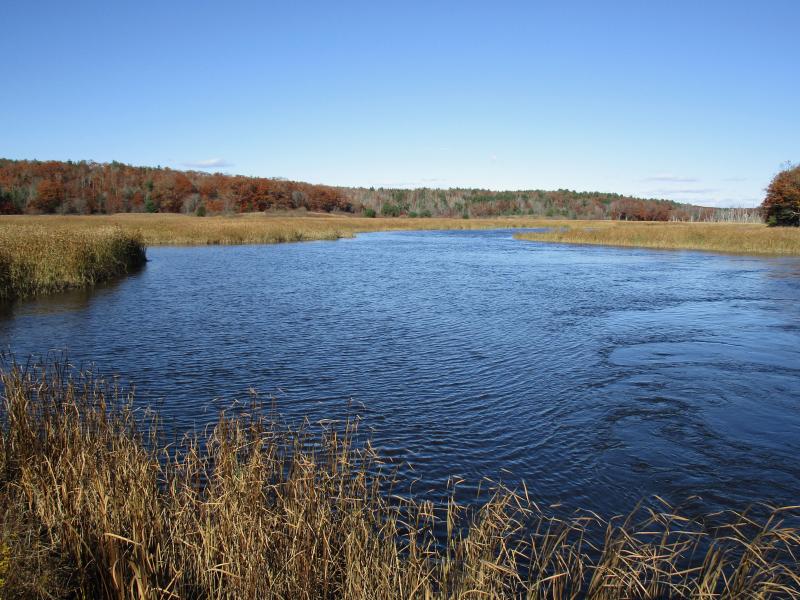 Looking north from Route 1 at Back River Creek. PHIL DI VECE/Wiscasset Newspaper
Looking north from Route 1 at Back River Creek. PHIL DI VECE/Wiscasset Newspaper
 The George Wright Road Bridge where the culvert empties into a small pond. PHIL DI VECE/Wiscasset Newspaper
The George Wright Road Bridge where the culvert empties into a small pond. PHIL DI VECE/Wiscasset Newspaper
 Pleasant Cove in Woolwich as seen from George Wright Road. PHIL DI VECE/Wiscasset Newspaper
Pleasant Cove in Woolwich as seen from George Wright Road. PHIL DI VECE/Wiscasset Newspaper
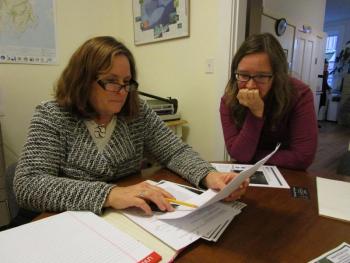 KELT Executive Director Carrie Kinne, left, and KELT project coordinator Ruth Indrick. PHIL DI VECE/Wiscasset Newspaper
KELT Executive Director Carrie Kinne, left, and KELT project coordinator Ruth Indrick. PHIL DI VECE/Wiscasset Newspaper
 Looking north from Route 1 at Back River Creek. PHIL DI VECE/Wiscasset Newspaper
Looking north from Route 1 at Back River Creek. PHIL DI VECE/Wiscasset Newspaper
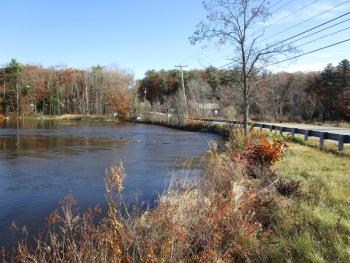 The George Wright Road Bridge where the culvert empties into a small pond. PHIL DI VECE/Wiscasset Newspaper
The George Wright Road Bridge where the culvert empties into a small pond. PHIL DI VECE/Wiscasset Newspaper
 Pleasant Cove in Woolwich as seen from George Wright Road. PHIL DI VECE/Wiscasset Newspaper
Pleasant Cove in Woolwich as seen from George Wright Road. PHIL DI VECE/Wiscasset Newspaper
A $249,999 National Fish and Wildlife Foundation (NFWF) grant will be used to study returning a vast meadowland in Woolwich to a tidal saltwater wetland. The area is near the busy junction of Route 1 and George Wright Road.
Kennebec Estuary Land Trust (KELT) at 92 Front St. in Bath will facilitate the study that partners the Maine Department of Transportation, the town of Woolwich, Bath Water District, the Department of Inland Fisheries and Wildlife, Bates College and three other state and federal agencies. The study is expected to take 18 months.
KELT project coordinator Ruth Indrick said her office received official notification of the grant Friday, Nov. 9. She added MDOT has agreed to provide a $300,000 match. The grant period runs from Jan. 1, 2019 to June 30, 2020.
The title is, “Back River Creek Coastal Infrastructure Resilience and Salt Marsh Project,” Indrick said Tuesday in an interview at KELT’s office. Also present was KELT Executive Director Carrie Kinne. Kinne said Indrick will coordinate the different groups in the partnership, calling in experts when needed.
KELT became involved in the NFWF grant after Woolwich approached it about funding opportunities and natural habitat impact for replacing the bridge and culvert on George Wright Road, said Indrick.
Woolwich officials had previously worked with KELT and Bath Water District in the construction of the fish ladder on Nequasset Brook, added Kinne.
The study will look at the replacement of a small bridge and a box culvert on George Wright Road to improve tidal flow and facilitate fish migration. The changes would impact over 140 acres of Back River Creek returning it to a salt marsh and habitat for migratory fish and birds.
“The upriver stream is partially saltwater now but the tidal flow is restricted in part because of the size of the culvert,” explained Indrick.
Waters flow into Back River Creek from Pleasant Cove, which feeds into the Sasanoa River. The creek runs inland about 3.3 miles stretching as far north as Old Stage Road.
Returning it to a saltwater marsh would create a spawning area for ducks and other birds, along with migratory fish including, Atlantic salmon and striped bass, said Kinne.
The grant application states the study will also explore possible modifications to Route 1 to address occasional flooding caused by extremely wet weather and higher than normal tides from Pleasant Cove. This may include raising the elevation of the highway and improving tidal flow beneath it. MDOT estimates an average of 18,940 vehicles use this stretch of road on a daily basis.
According to Indrick, MDOT chose to partner and provide funding for the study partly due to work planned on the Route 1 bridge. The bridge near the Taste of Maine Restaurant passes over the railroad and is on the western side of the meadow. Its substructure received a “poor” rating during a 2017 inspection.
Another infrastructure improvement to be studied is the Bath Water Department’s transmission line. The main carries drinking water from the treatment facility at Nequasset Lake to about 15,000 customers in Bath and West Bath. It runs under George Wright Road and over the 84-year-old culvert.
The application notes BWD considers this “as one of their most critical weak points in their system.”
The Department of Inland Fisheries and Wildlife owns the property on the upstream side of Route 1. “They acquired the wetlands as part of a remediation project and have expressed support for restoring tidal flow,” according to the application KELT filed.
The state manages both Route 1 and the railroad that skirts the perimeter of the meadow. Woolwich maintains George Wright Road, the bridge and box culvert. The town also owns and maintains a small boat launch providing the only public access to Pleasant Cove.
In 2017, MDOT gave the George Wright bridge a poor rating due to erosion of its embankment and problems associated with the culvert. The town subsequently hired Calderwood Engineering of Richmond to study and estimate the cost of replacing the bridge and culvert.
KELT’s application notes the 9-foot box culvert under the George Wright Road bridge “is completely underwater during high tides, has high flows and remnant structures from a dismantled tide gate that makes fish passage difficult.” The tide gate, or “flapper” beneath the bridge was removed in 1998.
The study includes developing a hydraulic model, feasibility analysis, engineering designs, and what permitting is needed, added Indrick.
As noted within the application, project partners including Woolwich will be able to seek construction funding to implement changes. Potential funding sources include the Maine Natural Resources Conservation Program, Maine Water Bond and the USFWS National Coastal Wetland Conservation Grant.
Selectman Allison Hepler will represent Woolwich during the study.
Event Date
Address
United States







